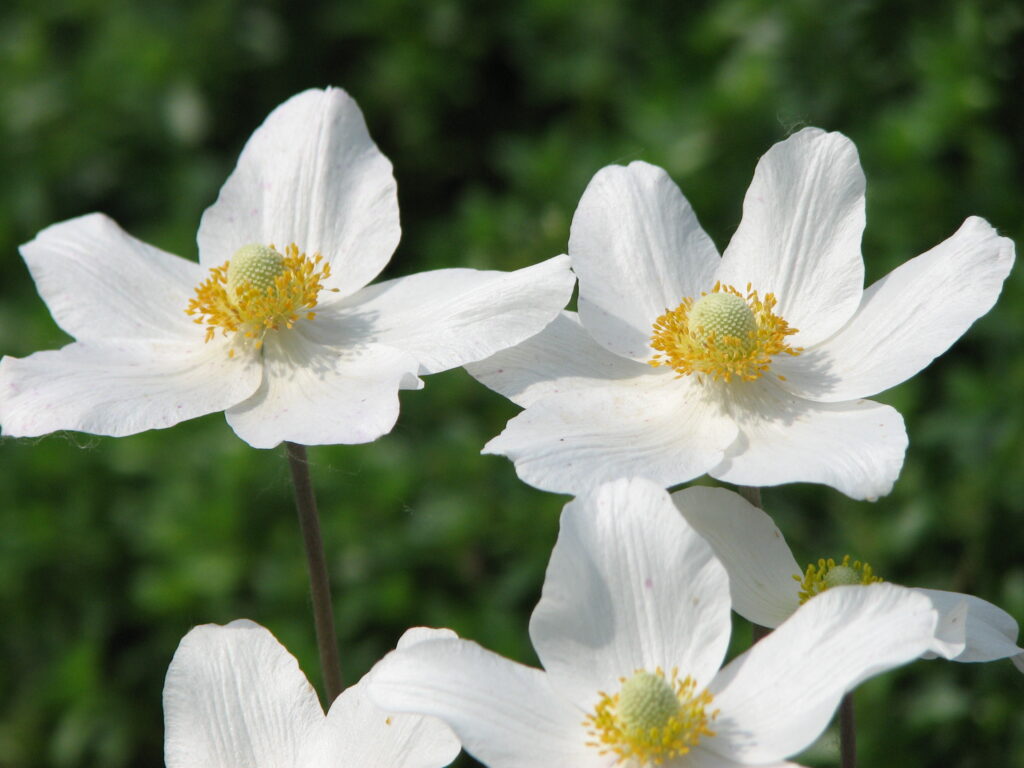Anemone sylvestris, commonly known as the Snowdrop Anemone, graces many gardens with its delicate white blooms. Originating from the woodlands of Europe, garden enthusiasts have come to love this plant for its simplicity and elegance.
Characteristics and Growth
The Snowdrop Anemone showcases white, fragrant flowers that bloom in late spring. These blossoms sit atop slender stems, swaying gently with the breeze. Deep green leaves provide a lush backdrop for the pristine white flowers.
If you’re looking to start a flower garden, the Snowdrop Anemone makes an excellent choice. It’s not just about planting a flower; it’s about creating a visual spectacle. Dive into this guide on How to Start a Flower Garden: Blooms of Beauty Await for more insights.
Historical Significance
For centuries, Anemone sylvestris has adorned European gardens. Its ethereal beauty has inspired poets, artists, and gardeners alike. In ancient times, people believed the Snowdrop Anemone had healing properties and often used it in traditional medicine.
Planting and Care
Anemone sylvestris thrives in well-draining soil and partial to full sunlight. While it loves moist conditions, ensure the soil doesn’t remain waterlogged. Regular watering, especially during dry spells, will keep this plant vibrant.
If you’re aiming to blend the beauty of flowers with the functionality of edibles, consider designing a space for both. Discover the art of Designing a Flower and Vegetable Garden: Where Beauty Meets Functionality.
Propagation Techniques
You can propagate the Snowdrop Anemone through seeds, division, or cuttings. Most gardeners prefer division during its dormant period. Sowing seeds in pots during autumn or taking cuttings during the growing season also works.
Landscape and Design
The Snowdrop Anemone fits seamlessly into various garden designs. Whether you’re aiming for a woodland garden look, a cottage garden, or a contemporary design, this plant can enhance your space’s beauty.
If you love quaint and charming retreats, explore Cottage Garden Design Tips: Creating a Quaint and Charming Garden Retreat. The Snowdrop Anemone can be a perfect addition to such landscapes.
Pests and Diseases
Like all plants, Anemone sylvestris can attract certain pests and diseases. Aphids, slugs, and snails might target its tender foliage. Regular inspection and early intervention can prevent significant damage. Fungal diseases, such as powdery mildew, can also affect the Snowdrop Anemone. Good air circulation and avoiding overhead watering can help prevent such issues.
Cultural Significance
In various cultures, the Snowdrop Anemone symbolizes hope, purity, and protection. It often represents the beginning of spring, symbolizing new beginnings and rebirth. Some traditions believe that planting Anemone sylvestris in your garden can ward off negative energies.
Conclusion
Anemone sylvestris stands as a testament to nature’s beauty. Its historical and cultural significance adds depth to its physical allure. Whether you’re a seasoned gardener or just starting, this perennial can infuse elegance into your garden. Let its beauty transform your space into a woodland wonder.

